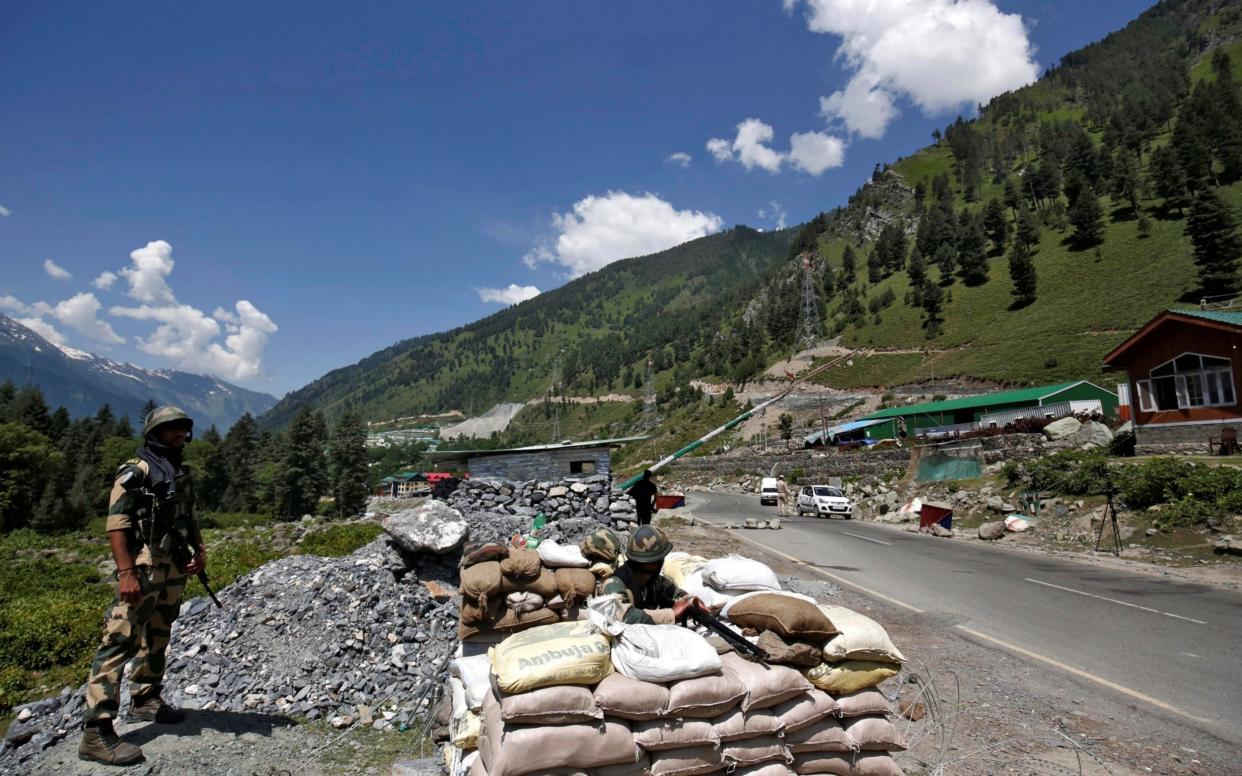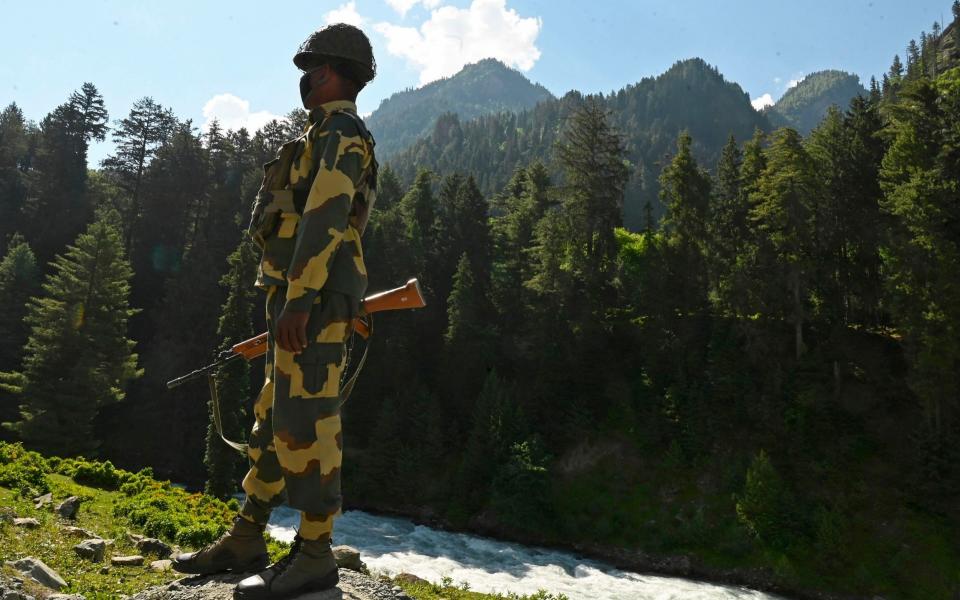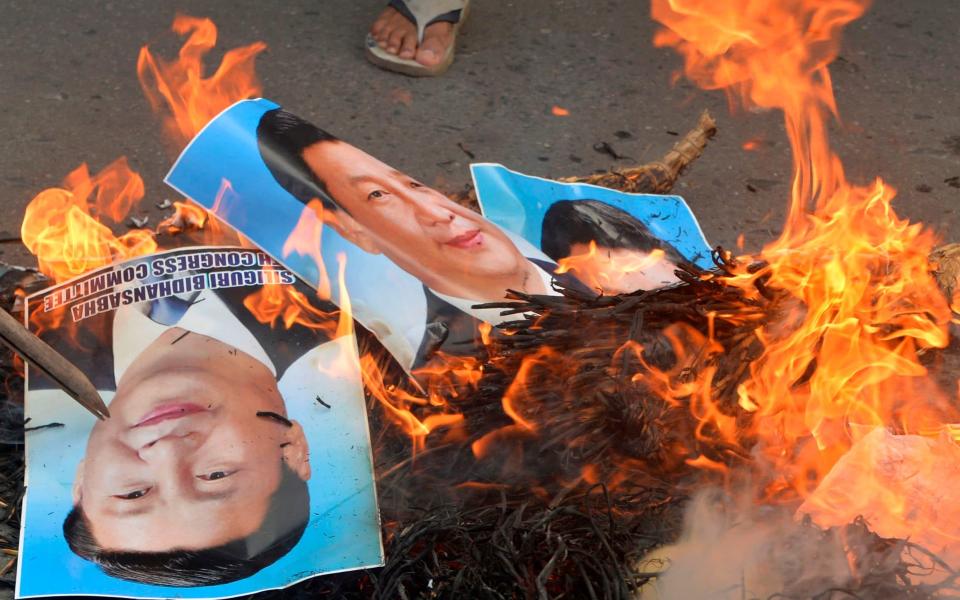Brutal details emerge of India soldier 'ambush' on contested border with China as Modi tries to calm tension

As the sun began to set over the Himalayan peaks, Colonel Santosh Babu and his unarmed platoon of 50 Indian soldiers on Monday set off on a patrol across the strategically crucial Galwan Valley in Ladakh.
Their mission was probably the most important in recent Indian history - to ascertain whether Chinese troops had withdrawn, as per an agreement between senior army officers from the two nations, from territory which had previously been administered by India for decades.
Instead, to their surprise, what Colonel Babu's men found were temporary Chinese all-weather tents and roughly enemy 100 soldiers waiting at a location called Patrolling Point 14.
Despite being outnumbered, the Indian soldiers confronted the Chinese troops. Some started to remove the tents, sparking a long and brutal man-to-man brawl that has brought the two superpowers to the brink of war.
In an initial clash, Colonel Babu and two other soldiers were killed. Soon after 17 Indian troops met the same fate, many either falling or being pushed off a ledge into the freezing waters of the Galwan River below.
“The soldiers had gone to check the retreat of the Chinese troops as per the understanding between the two sides,” an Indian official source told the Telegraph.
“Just when the Indian soldiers, who were on patrol started removing Chinese tents and material, it evoked a violent response from the People’s Liberation Army (PLA)”.
As the fight continued, both sides called for reinforcements but Chinese troops again significantly outnumbered those on the Indian side, allegedly 500 to 100.
The clash lasted over six hours, with Indian Army sources claiming Chinese troops brandishing weapons - including clubs wrapped in barbed wire and embedded with nails - mercilessly hunted down fleeing Indian soldiers on the mountainside.
Doctors performing the post mortems of dead Indian soldiers said there were no firearm injuries but soldiers either died from drowning or after being badly beaten.
“The Colonel died by drowning and he had no injury marks but the other dead were hit by stones and blows on the chest,” a doctor said. “Some of them had bad bruises and the situation is very tense. We are receiving bodies in batches of three to conduct post mortems.”

Indian Army sources told the Telegraph that 23 troops are now confirmed to have died but casualties will significantly rise, with 110 soldiers injured and more troops still missing.
The Galwan Valley is extremely remote and the terrain harsh and unforgiving. Leading media house India Today said they are “quite sure” the death toll will rise as more bodies are “fished out” of the river and recovered from the surrounding heights.
The Indian sources say China suffered 35 casualties during the clash, quoting U.S intelligence material, a development Beijing said it wasn’t aware of.
The clash marks the first time casualties have been suffered by either Asian superpower along their 3,488km long disputed border since 1975.
India and China have been facing-off for over a month in Ladakh after Chinese troops traversed the Line of Actual Control (LAC) on May 5 and 6 to occupy 60 square kilometres of territory administered by India at four locations - Pangong Tso Lake, Galwan River and Valley, Hot Springs and Demchok.
China has long imposed territorial claims on other nations, especially in the South China Sea, declaring entire swaths of international waters as its own by directly flouting international agreements.
On Wednesday both sides attempted to de-escalate tensions. India's Prime Minister, Narendra Modi, appeared to play down any immediate military retaliation for the death of Indian troops.
He promised that India "is capable of giving [a] befitting reply if instigated" but said the country "wants peace."
The Chinese foreign ministry asserted the disputed Galwan Valley had always been under Beijing’s control but said it was “communicating with Delhi to “resolve the problem” and that the situation was generally “stable and under control”.
Nevertheless, China has continued to move troops, artillery, tanks and combat aircraft from bases in Tibet to the LAC before and after the fatal clash.

India has reinforced its side of the frontier and soldiers have been told to prepare for any eventuality. The Indian Navy has also been given the go-ahead to deploy its ships across the Indo-Pacific region to protect Indian interests, including in the strategically important Malacca Strait. Despite such reinforcements, the Indian Army said troops from both sides had disengaged in the Galwan Valley and they would now attempt to resolve the conflict through talks.
On Wednesday, the Chinese and Indian foreign ministers held a tense phone call in which New Delhi was told to cease all “provocative” action in Ladakh. United Nations Secretary-General Antonio Guterres said his organisation was concerned by reports of violence in Ladakh between India and China.
“We urge both sides to exercise maximum restraint. We take positive note of reports that the two countries are engaged in de-escalating the situation,” said a spokesperson.
The clash has prompted fury among the Indian public, however. There has been an outpouring of grief on social media, alongside calls for a boycott of Chinese goods and a proscription of all investments in the country by Beijing.
In the city of Varanasi, members of an NGO burnt the Chinese flag and an effigy of Chinese President Xi Jinping.
